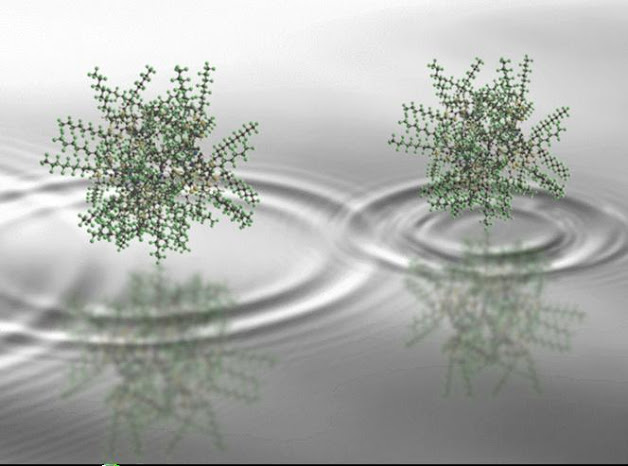A new experiment has shown that quantum superposition transcends the world of elementary particles and can manifest itself in molecules of up to 2,000 atoms that behave like photons, massless particles.
Quantum superposition occurs in nature when an elementary particle simultaneously possesses two or more states, as happens for example with photons, which can remain in two different places at the same time, something unimaginable in the ordinary physical world.
This property has also been observed in other particles, such as electrons or neutrons, in atoms or even in small molecules, as science has discovered.
This journey has led scientists to wonder where the boundary is between the quantum world and what we call the real world, when a particle ceases to be quantum and is subjected to known physical laws.
That is to say, what has to happen so that at a certain moment in the architecture of reality, matter acquires the physical characteristics that allow us to study it, know it and unravel it, understand its natural dynamics, just as we do with matter.
New research now developed between the University of Vienna (Austria) and the University of Basel (Switzerland) has taken a significant step in the direction of determining when the quantum world begins to behave like the world we know in everyday life.
Giant and quantum molecule
This research, piloted by Markus Arndt, has led for the first time a molecule of almost 2,000 atoms, built with a synthetic mixture of elements, to a "quantum" superposition and managed to be in two different states at the same time, just as they do. photons, which are massless particles.
To achieve this, the researchers built a special interferometer, which even allowed them to achieve superposition with one of the largest molecules, composed of more than 40,000 protons, neutrons and electrons, with a wavelength (De Broglie) a thousand times smaller than the diameter of a single hydrogen atom.
Scientists observed the superposition of states of these molecules when they introduced them into a 5-meter-long tube and propelled them forward: when they reached the end of the tunnel, they behaved as photons do in the well-known Young's experiment. double slit.
This experiment marked another epoch in the history of quantum physics: although it was conceived in 1801, long before the quantum revolution, by scientist Thomas Young to analyze the corpuscular or wave nature of light, it was especially valid much later to demonstrate the wave-particle duality of quantum mechanics.
Thus, it was possible to determine that electrons, protons or neutrons produce interference patterns similar to those obtained when Young's experiment is carried out with light (photons).
New chapter
The new research adds a new chapter to this story, by determining that a protein-sized molecule also behaves like light, electrons, protons, or neutrons. That is, it exists in part in all its theoretically possible states simultaneously.
Hot complex molecules, composed of up to 25,000 atomic masses, can then reach quantum superposition and behave as elementary particles do. The difference between the quantum world and the physical world has been reduced in this experiment.
The imaginary experiment devised by Schrödinger in 1935 falls short of explaining this new discovery: it is as if instead of a cat alive and dead at the same time, we are talking about a galaxy that appears and disappears from astronomical observation and prevents us from determining whether it really it is somewhere in the universe or just in intermittent space.
Because these quantum discoveries tell us not only about elementary particles, but also about galaxies, clusters or the Big Bang, as well as the microwaves, our personal computer or our mobile phone, even the cells of our body, all of them products of the disconcerting quantum world that supports and shelters the entire universe.
Reference:
Quantum superposition of molecules beyond 25 kDa. Yaakov Y. Fein et al. Nature Physics (2019) .DOI: https://doi.org/10.1038/s41567-019-0663-9

